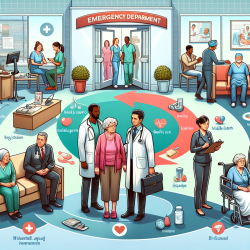As a practitioner in the field of audiology and special education, continuous improvement of clinical skills is essential. One valuable resource to consider is the book "Laboratory Exercises in Evoked Potentials" by John A. Ferraro, published in 1997. This lab manual provides practical exercises and detailed diagrams to enhance the understanding and interpretation of auditory evoked potentials (AEPs), particularly the auditory brainstem response (ABR).
The book is divided into two main sections. The first five chapters (pages 1-70) introduce the reader to AEPs, providing historical perspectives and detailed discussions on the components of generic AEP equipment. Chapter 1 focuses on equipment setup and protocols for conducting AEP measurements, while Chapters 2 through 5 cover the clinical implementation of various AEPs, including ABR, electrocochleography (EcochG), auditory middle latency responses (AMLR), and auditory late potentials.
The second section (Chapter 6, pages 71-169) offers a series of practice waveforms for new clinicians to examine and identify important morphological landmarks. This section is particularly beneficial for those seeking to gain practical experience and confidence in interpreting AEP waveforms. The unlabelled waveforms, followed by labeled versions, allow practitioners to test their skills and compare their interpretations with the provided answers.
Here are some key takeaways from the book that can help improve your clinical skills:
- Hands-on Practice: The practice waveforms in Chapter 6 provide an excellent opportunity to gain practical experience in identifying key features of AEP waveforms.
- Equipment Setup: Detailed guidance on setting up AEP equipment and conducting measurements can help ensure accurate and reliable results.
- Understanding Protocols: The book discusses various protocols and their importance, which can help practitioners understand the rationale behind different settings and procedures.
- Clinical Implementation: The book covers the clinical implementation of different types of AEPs, providing valuable insights into their practical applications.
By incorporating the outcomes of this research into your practice, you can enhance your clinical skills and improve your confidence in interpreting AEP waveforms. Additionally, this book serves as a supplement to more theoretical texts, making it a comprehensive resource for both new and experienced clinicians.
For those interested in furthering their knowledge, I highly recommend reading the original research paper. To read the original research paper, please follow this link: Laboratory Exercises in Evoked Potentials (1997).










